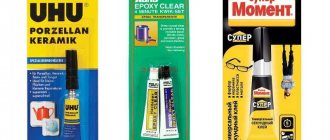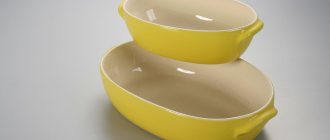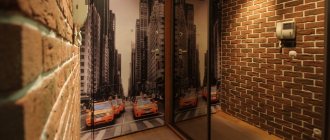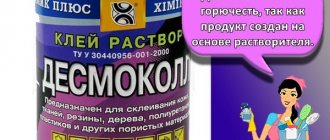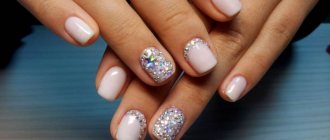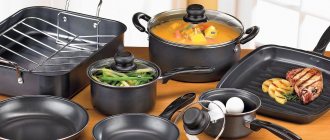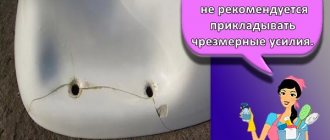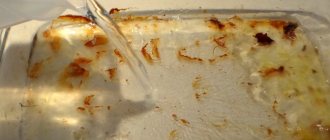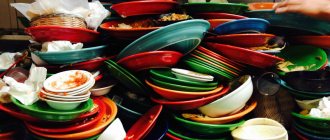How can you glue food ceramics together? How to glue ceramics at home
A broken cup from your mother or grandmother, an old memorial figurine with a broken piece - these damaged things that preserve the memory of our family and friends can be very sad. But you can try to glue porcelain or earthenware items together. There are a lot of synthetic adhesives on the market now, but you can try some old advice.
So, to obtain a mixture for gluing glass and porcelain, you need to melt 50 grams of light shellac with 25 grams of turpentine over low heat. The mixture is cooled slightly and divided into small tiles. For gluing, the mass is heated, the edges of the fractures are lubricated with it and carefully connected. Excess mass is carefully removed.
When gluing glass, gelatin is also used, to which a small amount of an aqueous solution of potassium dihydroxide is added. This glue, when exposed to light, becomes completely insoluble even in hot water.
Casein dissolved in liquid glass is also suitable for this purpose.
Porcelain can be glued with the same compounds as glass. Gypsum cement mixed with egg white is especially good for repairing dishes. This cement hardens very quickly, and therefore must be handled very carefully.
You can get glue for porcelain and earthenware in the following way: beat egg whites into foam and put them in a cool place for a day. After this, the settled protein should be separated and thoroughly ground with quicklime powder, adding it gradually in such an amount to obtain a dough-like mass. This glue is applied to the parts to be glued in a thin layer. The gluing process must be done as soon as possible so that the glue does not have time to dry out.
To glue parts of porcelain and glass objects, you can use the following putty: take washed glass flour (crushed glass) - 1 part, add river sand (sifted) - 2 parts and liquid glass - 6 parts. This putty cements the parts to be glued very firmly. Its structure is somewhat rough, so it is used for gluing large objects.
Here is another putty, which differs from the previous one in its smaller structure, and is also used for gluing large objects. Take burnt lime (quicklime) - 1 part, chalk (ground) - 10 parts and liquid glass - 2″/2 parts.
According to both recipes, the putty is prepared before use, as it hardens quickly.
There is a particularly hard gypsum putty for gluing small glass and porcelain objects. You can prepare it like this: take burnt sculpture or medical plaster and place it in a saturated alum solution for one day. It is then dried and again calcined and crushed. Gypsum treated in this way, when combined with water, turns into a very hard mass. The ratio of gypsum and water should be such that a liquid mass with the consistency of cream is obtained.
It so happened that a piece broke off from our family heirloom, an antique crystal vase. I had to look for advice on how to resuscitate it. If anyone has experience with crystal gluing, I'd love to hear from them.
And this is what I found on the Internet:
Today you can glue anything. Cyanoacrylate glue
,
PVC glue, viscose glue, polyurethane glue, antibacterial silicone work wonders and save even the smallest things. Even the most incompatible materials can be tightly joined. For example, gluing metal to plastic, or metal to wood.
A lot of souvenir products today are made of crystal and simple glass. It often happens that products crack at the seams, a cat or a small child throws a figurine off the table with a crash. So what now? Most people throw it all into one of the many drawers in the house, and each time they come across fragments of “beauty”, they purse their lips in annoyance.
Therefore, if you don’t raise your hand to take an old porcelain masterpiece to the trash, maybe it’s worth reconsidering what is on the market, and, probably, your “grief” will still be helped.
How to glue glass?
It is necessary to distinguish between window glass and souvenir glass. If you need to glue window glass, it is better to use sealants or silicones. It is advisable to use them when installing window and door frames. In this case, they will also perform thermal insulation functions.
Any specialized department will advise you on cyanoacrylate, or, in other words, cyanoacrylate glue. It is he who allows us to say: broken glass is not yet a direct path to the trash can.
Cyanoacrylate
used for thin seams when you want the past of your glass not to be obvious. Not all souvenir and gift products fall into this category. To restore the integrity of a figurine, vase, glass covering, or even repair a seemingly hopeless aquarium, all you need to do is use cyanoacrylate glue. Not PVA or “Moment”, but glue clearly intended for this purpose. Of course, subject to the following requirements:
The surfaces should practically touch each other, i.e. fit tightly to each other,
A gap of even 1 mm is unacceptable. If it does exist, then you shouldn’t rely on the quality of glass bonding. The seam on the glass will still be noticeable,
The glass must be thoroughly washed, dry and grease-free,
Water should not get into the glue,
The glue is applied twice. The first is a thin layer with a wooden stick or a thin brush. We wait until the glue stops sticking to your fingers when you touch it. Then apply the second layer,
The gluing effect can be checked no earlier than on the 4th day.
Method of using cyanoacrylate glue:
The glue is applied manually from a bottle,
Press the parts together until they lock into place.
Remember that cyanoacrylate is suitable for gluing two homogeneous surfaces.
How to glue porcelain?
Porcelain can be glued with the same glue as glass. Gypsum cement mixed with egg white is especially suitable for “reanimating” porcelain. This cement hardens very quickly and therefore needs to be handled very carefully.
You can get glue for porcelain and earthenware in the following way: beat the egg whites into a foam and put them in a cool place for a day. After this, you should separate the settled protein and thoroughly grind it with quicklime powder, adding it gradually in such an amount that a dough-like mass is obtained. This glue is applied to the parts in a thin layer. The gluing process must be done as soon as possible so that the glue does not have time to dry out.
Porcelain and ceramics can be glued with waterproof glue. Two-component glue is what you need. It is suitable for both construction and small gluing. You can apply it in the same way as in the case of glass - in two layers, or you can spread it and immediately press it or bandage it with something very tight - a bandage, a coarse lace, tape, an elastic band.
Remember that all adhesives are toxic. They should only be used on souvenir and gift products. Glued household dishes are dangerous to eat because they contain toxins. You should not eat or drink from it.
How to glue a vase?
To glue a vase or disguise a huge gap, first cut out a patch, then glue it with a product in accordance with the material (crystal, porcelain, other materials). The same cyanoacrylate or waterproof glue is suitable. Make sure that it is transparent and does not contain yellowish or gray impurities, as is often the case when purchasing.
And then comes the heart of the trick. There is no point in waiting for the patch to grow in without leaving a trace and for the vase to become like new. It is recommended to do the following procedure: pour water into a vase and boil it. The same can be done with figurines, for example. After this, the gluing will be more reliable, and in the case of a vase, it will also be invisible.
There are ceramic products in every home. Sometimes they do not meet the declared quality, and some do not last as long as we would like. What to do if your favorite plate or cup breaks? There is always a way out, even in such a situation. All that remains is to figure out how to glue the ceramics together.
Restoration adhesive options
Is it possible to glue ceramics securely without harming your health? This question is asked by many people faced with such a need.
Adhesive compounds are one of the common options for joining parts. They are presented on the market in a wide range and contain an adhesive substance. The scope of application of such products is the repair and reconstruction of products, ceramic dishes and decorative items made of ceramics and earthenware. These two materials are often combined, since the glue for one and the other is the same, which makes it universal.
Don't know what glue to use to glue ceramics? A good option is a mixture based on cyanoacrylate. This is the optimal combination of price and quality. You can buy superglue at any specialty store.
Among other common options for adhesives for ceramics, experts note the following:
- "Second".
- "Super moment."
- "Cyanopan."
- "Glue."
- "Force".
- "Monolith".
- "Elephant".
- "MARS" (imported waterproof glue for ceramics).
- PVA used to restore food-grade ceramic products. But this option is suitable only for those products whose surface is not varnished.
- F-2, BF-4 - for all types of ceramics.
How to choose glue for ceramics?
The range of adhesive products is very large, but finding and choosing high-quality glue for restoring ceramic products is not so easy. Most often you can find glue that is used for ceramics and earthenware, for gluing decorative items, ceramic dishes, etc.
Quite often, these two materials are classified as one group, since the adhesive composition for one and the other can be used the same, so it is considered universal. This is because each process requires its own parameters, and as a rule there are not so few of them.
Basic parameters for choosing glue:
- Connection strength parameters.
- Features of preparing the material before using glue.
- Parameters of strength and resistance to chemicals and other liquids.
- Color. It is very important that it matches the color scheme of the product that will be restored.
- Application conditions and environmental parameters.
- The maximum and minimum temperatures at which the glue will retain its connecting properties and qualities.
One of the most important factors is the water resistance parameter, especially when it comes to the restoration of dishes. But most often, when choosing, people make the mistake of evaluating solely the parameters of the strength of the connection. If there is a need to increase the lost area of the product, then it is very important to choose the right glue color.
How long does it take for glue to dry?
For compositions from many well-known manufacturers, the setting time is about 5-10 seconds. But complete drying begins only a few hours after the end of the gluing work. In this regard, it is not recommended to use the restored product for some time in order to prevent the glued fragments from moving from the original fixed position.
Repair: how to get rid of chips on a toilet
No one is immune from the formation of cracks or chips on the toilet. This is a problem that is a serious nuisance, but there are solutions to it, other than replacing the plumbing, (even if they are temporary).
Remember that gluing will not provide the former reliability and strength of the structure. As a result (sooner or later), the toilet will have to be replaced. Restoration will only delay this need.
Don't know how to glue ceramics or sanitaryware? They can be firmly connected using the following compounds:
- "Rapid".
- "MARS".
- "Unique".
- MC-1.
- BF-2.
If the option of purchasing a ready-made compound is not suitable, you can use homemade glue as an alternative. The article presents the three most popular methods of preparing a mixture for restoring a toilet.
Jack of all trades
Synthetic adhesives can be thermosetting or thermoplastic.
We suggest you familiarize yourself with Why spathiphyllum dropped its leaves after transplantation? What needs to be done to revive a flower?
The first group includes, for example, epoxy and phenol-formaldehyde compounds. During curing, their chemical structure changes, as a result of which the adhesive substance changes from a plastic state to a glassy or elastic one. They are distinguished by high strength and durability of the adhesive joint, however, the materials being glued must be of equal strength.
In adhesives of the second group, the structure does not change during gluing, and setting occurs due to the removal of the solvent or solidification of the melt. These are, for example, PVA or acrylic glues. Their advantages are plasticity, light fastness, good penetration, reversibility of gluing; well, the disadvantage is relatively low heat resistance and less strength under long-term load.
Method 2. Based on shellac and turpentine
Another option for gluing ceramics.
Ingredients:
- turpentine;
- light shellac.
Combine the ingredients and place the container over low heat. The mixture requires cooking until the shellac has completely melted. During preparation, the glue is constantly stirred until a homogeneous consistency is obtained. This composition takes longer to harden, so it can be prepared as a backup option. The mixture is allowed to cool and, divided into portions, placed in storage or used to treat cracks or chips in the toilet bowl.
As necessary, it is heated and applied in a thin layer to the surfaces to be bonded. As a result, the reinforced parts are compressed, which ensures their tight adhesion. The resulting glue residue should be wiped off immediately.
How to carry out the procedure correctly
The process is simple, and the technology consists of several simple steps. Step by step it looks like this:
- Collect all the parts that need to be connected. If you are re-gluing a broken cup or vase, then it is worth removing the remaining substance from the previous time. A knife is used for this.
- Wash the parts in warm water using dish soap or other gel-like substance (shower gel, shampoo, etc.). After this, rinse the fragments, set them aside until completely dry, but do not wipe them, as you may get hurt on the sharp edges or break small corners.
- Place all the pieces for gluing together like a puzzle.
- Treat the joints with acetone.
- Carefully apply a thin layer of glue to the gluing areas using a brush or ear cleaning stick.
- Leave the first layer to dry.
- Apply a second layer and press the adhesive parts together (hold for several seconds). Using a cloth, remove any remaining mixture.
- Then connect the glued part with another fragment (it is advisable to do this after some time so that the previous parts stick well).
- Fix the product well. This will ensure a secure grip.
Now you know how to glue ceramics. Since you are working with glass, you should take precautions, for example, wear rubber gloves to prevent minor cuts or wounds on your hands.
Following the algorithm described above and understanding how to glue ceramics together, repairing ceramic or porcelain products is not as difficult as it might seem at first glance.
Remember that restored items are no longer suitable for use in the kitchen. When sour or salty food is placed in such a container, a caustic substance that is dangerous to human health is released, contained in the glue and reacting under certain conditions.
Now you know the best way to glue ceramics or porcelain products and how to act in different situations related to the restoration of objects and even plumbing fixtures.
Products made of porcelain and ceramics can be glued with adhesives “Mars”, “Polyvinyl acetate”, BF-2, “Rapid”, MTs-1, “Mekal”, “Kittifix”, “Supercement”, Ago”, “Elastostil-2”, EDP , EPO, "Latex" and "Unicum". However, it should be taken into account that Supercement and Ago glues do not form sufficiently strong seams, BF-2 glue is colored, and polyvinyl acetate glue is not waterproof.
When gluing porcelain with Rapid, Ago, Mars, MC-1, Latex, Unicum, Kittifix and Mekol adhesives, degrease the surfaces with a swab moistened with acetone, apply a layer of glue to both surfaces and let Let it dry for about 20 minutes. After this, apply a second layer of glue, connect the surfaces to be glued, pressing them firmly against each other using a rubber band, clamp or some other device, and keep them in this position for 3 hours. The final setting of the seam occurs within 2 days.
When working with “Rapid”, “Ago”, “Kittyfix” and “Mekal” adhesives, you can use another method: coat the grease-free surfaces with glue only once and immediately connect them, squeezing them with a tourniquet or in a clamp. Porcelain can be glued using Elastostil-2 glue. This is a two-component waterproof adhesive that is sold packaged in two aluminum tubes. Before use, the contents of the tubes are mixed in a 1:1 ratio and mixed thoroughly. Surfaces must first be degreased and thoroughly dried. The prepared glue is applied to both surfaces and the parts are compressed.
During the 3 days while the adhesive joint is setting, under no circumstances should water fall on it. Strong and waterproof adhesive seams are produced by EDP, Mekal, EPO, Mars, Rapid, Kattifix, Elastostil-2, Latex and Unicum adhesives.
For gluing sanitary ware made of porcelain and ceramics, in addition to traditional adhesives, compositions that you can make yourself are also used.
To glue glass or porcelain products that will not be exposed to heat, you can prepare a paste of gypsum and quicklime: 50 g of gypsum, 10 g of quicklime, 1 egg white and 10 g of water are mixed immediately before use.
To glue porcelain or ceramics, 10 g of kaolin and 1 g of calcined borax are mixed with water to a paste. Products glued with such a paste are fired over high heat until light red heat. The seam is heat and water resistant.
To glue porcelain products, you can prepare the following paste: mix 20 g of ready-made casein powdered glue with 8 g of silicate glue. In this case, the glued product will not be afraid of water, since the result will be a fairly water-resistant adhesive seam.
To glue porcelain objects, you can also prepare a composition of wood glue: add 12 g of starch and 7 g of chalk to the wood glue solution. The resulting mixture is thoroughly mixed. The glue is not heat resistant.
To glue glass objects, take 100 g of liquid glass per 20 g of dry casein glue. When gluing glass with this composition, the contact method is used: a layer of glue is applied to both surfaces to be glued and allowed to dry slightly. After this, the objects to be glued are connected and heated strongly.
Porcelain and earthenware can be glued with a paste, which is obtained by adding gypsum to a 3% gelatin solution. The paste is prepared immediately before use. Another glue for gluing porcelain and earthenware is also prepared on the basis of gelatin: a 25% gelatin solution is mixed with an equal amount of vinegar essence.
Every family has items made of porcelain or ceramics; these could be new dishes, home decorations, or old grandmother’s figurines. It often happens that such products break, although ceramics itself is a durable material. Do not despair in this case, because a damaged item can be repaired. The broken dishes are glued together, and the cracks are covered with a special material or liquid glass, after which the excess parts are carefully cut off.
What is better to take for gluing
I would like to extend the life of ceramics.
It is not only used for its intended purpose, but also decorates the interior with its originality and uniqueness. It’s hard to say which is better ceramics or porcelain in terms of quality and durability, it all depends on various factors. How to glue porcelain and ceramics? Which glue for porcelain and ceramics should I choose? Or maybe throw away the broken product? Should I throw away the broken vase or not? If not, how to glue a ceramic vase?
Don't rush to throw it away. You can always throw it away. First you need to try to glue the product, and if nothing works, then you can throw it away. Throwing it away is the last thing left to do.
Various adhesives are used to repair ceramics. There are a huge variety of products available on the market for repairing ceramic cookware.
The following Russian-made adhesives for repairing ceramic tableware are offered for sale: “Second”, “Super-moment”, “Cyanopan”, “Glue”, “Sila”, “Monolith”, “Elephant”. There are also imported adhesives for gluing. The best waterproof glue for ceramics is MARS.
For ceramics that are used to store food, you can use PVA glue for gluing. But, it is recommended that after gluing the ceramic cup is covered with a layer of varnish. For gluing ceramic products, you can use epoxy glue, F-2 and BF-4 adhesives.
The following range of adhesives for porcelain is offered for sale – STANGE, “cosmofen ca-12”, you can also use “RAPID”. Among Russian-made adhesives, carbinol glue should be noted. Also, instead of glue for repairing porcelain, you can use epoxy resin EPOXY GLUE produced by BONDO, BIZON or similar adhesives.
To glue porcelain, you can use cement made from gypsum. To do this, add the white of 1 egg to the gypsum powder and mix very well. The resulting glue can be used to glue porcelain. Moreover, the gluing procedure should be performed very quickly, because this glue hardens quickly.
For gluing, you can make other glue at home. To do this, mix 1 egg white and soda. Beat Belov into foam, without adding soda. The whipped white should sit for one day, and only then add soda to the settled white and mix. You should add enough soda to get a mass similar in consistency to regular dough.
To do this you should:
- Take 1 liter of water. Add 100 g to water. Sugar, 100 gr. lime (necessarily slaked). Place the resulting mixture on the fire and cook over low heat for about 3-3.5 hours. The main thing when “cooking” is that it does not boil.
- Cool the resulting broth and let it sit for a few more hours.
- The water that remains after settling must be drained.
- Add 0.5 kg to the mixture. tile adhesive. Mix well and leave to settle again for 10-15 hours.
- If there is excess water, it must be drained. Boil the resulting mass one more time.
- Cool. Porcelain glue is ready.
This adhesive for food utensils is ideal.
There are a huge number of universal adhesives. These are adhesives that can be used to glue both porcelain and ceramics - casein glue, epoxy adhesives. The most popular is Porcelan Potch glue. Edible glue is often suitable for gluing both ceramics and porcelain. For example, the recipe described above can be used as an adhesive for ceramics and porcelain.
Gluing porcelain at home with glue is quite simple; for this you can use food grade porcelain glue. If you use one of the following adhesives for gluing - “Rapid”, “AGO”, “Kittifix” and “Mekol”, then you should perform the following steps:
- Wash and dry surfaces for gluing;
- Wipe with acetone;
- Apply one layer of glue to the gluing areas and immediately glue the parts together, pressing tightly.
- You can fasten it with a tourniquet for strength.
Cups also break very often. And I want to give a second life to my favorite cup. The following shows how to glue a porcelain cup together. Since the gluing algorithm is similar to the previous algorithm, but there are some differences:
- For gluing, craftsmen advise using super glue.
- Prepare surfaces for gluing - wash, dry and wipe with acetone. If the part breaks in the same place, remove any remaining glue.
- Gather the parts in advance.
- The process of applying glue is the same. Glued in two layers.
- Then the glued product should be placed, if they are not large, they should be placed in a saucepan or cauldron, filled with warm water and put on fire. Boil water over low heat for 2-3 hours. The product is left to cool in water. And only then, when the water has cooled, is it removed.
- If it is not possible to “boil” the product, then you can “warm it up” in the oven, or hold it over an electric stove (but in this case, the “warming up” procedure must be performed very carefully so as not to overheat the product and not get burned).
It may happen that a crack has formed in a vase or cup, or a fragment has fallen off, and a small hole has broken off.
Then the gluing algorithm is as follows:
- The preparation for gluing is the same.
- First you need to cut out a patch, the size of which should be 0.5 - 1.5 cm larger. You can use super glue for ceramics; natural glue is also suitable for gluing a patch.
- Be sure to take a waterproof one for repairs.
- Pour water into the product, but start the patch, but so that the water does not come into contact with the patch.
- Then boil the water for 2-3 hours.
- Cool everything. And pour out the water.
- If necessary, treat the gluing area with paint.
Repair of porcelain figurines is carried out in a similar way. But after the figurine has dried, it is recommended to cover it with several layers of varnish for greater durability. Each subsequent layer of varnish can be applied only when the previous layer of varnish has already dried well. After varnishing, the figurine will be a little heavier and will not be as fragile.
We suggest you familiarize yourself with How to wash ceilings made of ceiling tiles
Gluing ceramics at home is quite simple. You just need to follow these rules:
- We start by collecting all the parts that need to be glued together. If you need to glue a previously repaired cup or vase, then remove the remaining glue with a knife. And when everything is removed from the surface, you can move on to the next step.
- Wash all assembled parts thoroughly in warm water. For washing, you can use dishwashing detergent. Then rinse and let drain. It is not recommended to wipe, so as not to cut yourself with sharp edges or break something from the edges of the part.
- We hide all the details before gluing, so that we know in advance what to glue where.
- We treat the gluing areas with acetone.
- Apply an even thin layer of glue to the gluing areas. To apply the glue, you can use either a thin brush or an ear cleaning stick.
- Just leave the first layer of glue to dry.
- Then apply a second layer of glue. And press down the parts that need to be glued. Let's keep the details for a few minutes. Then remove the residue with a cloth.
- It is advisable to glue the other part after some time, so that the previous parts stick well.
- After the product is glued, it is advisable to fix it. And in this way everything will grasp not only correctly, but also well.
- A part is considered well repaired if it has been standing for 1-3 days (depending on the repair performed).
Since broken parts are, after all, glass, it is recommended to wear rubber gloves during repairs in order to protect your hands from minor cuts and wounds in advance.
Repairing porcelain and ceramics is very easy to do according to the algorithm described above.
Do not forget that all repaired products are no longer advisable to be used for food. Because if you place sour or salty food in such a product, harmful substances contained in the glue will begin to be released. And this is very harmful to health.
As a result, you know how to glue ceramics, how to glue ceramic dishes, and how to glue porcelain. Which glue to choose or prepare the glue yourself.
Dear porcelain trinkets, heirloom crystal vases, earthenware jugs and painted dishes - all this sits on shelves and cabinets, becomes covered with dust, and breaks with enviable regularity. The easiest way is to sweep the fragments into a dustpan with a broom and throw them away. But there are situations when a broken item is very dear to someone in the family, or its absence in its usual place in the closet will cause an extraordinary family showdown.
This can be done with glue prepared from homemade ingredients, or you can consult a specialist in the store and buy a special composition.
When you want to extend the life of ceramics, it seems that in this case all means are good. These tiny interior or serving details not only decorate the room, but also become an integral part of the home. Without them it is difficult to recreate the comfort in the house.
Do not rush to throw broken ceramic products into the trash bin. It's worth trying to repair the trinket.
What to glue
To choose glue for such work, it is worth distinguishing what the product consists of. Porcelain and ceramics have their own characteristics, which means the material for gluing is different. Let's look at some types of glue and figure out how such work differs.
What glue to use to repair ceramics
Ceramic products are very durable, but over time or due to the owner’s negligence they often break and break. There is no need to immediately throw away your favorite, valuable items.
- Of the Russian manufacturers, the most effective are: Super-moment, Secunda, Monolit.
- The best imported waterproof glue is Mars, very fast and easy to apply.
- Ceramic products are glued using epoxy glue or resin.
- For dishes, use regular PVA; only after repairs should you open them with varnish.
In addition to gluing ceramic dishes, ceramic glue is used in construction, for fastening tiles. Divided into three types: mastic, dry and epoxy. The mastic contains glue and chemical impurities. Used for fixing tiles to a flat surface. Such materials do not damage walls that cannot tolerate moisture, but are not heat-resistant.
Dry mixtures consist mainly of cement, sand and chemical additives. The choice of this material depends on the location of the tiles: on the street or in the house. Suitable for uneven walls, hiding all errors.
Epoxy is the most versatile material for fastening or gluing. It is resistant to moisture, acid and alkali, and has a flexible structure. Suitable for any material from which the walls are made. The seams that remain between the tiles are often filled with the same glue. It is very convenient and practical.
What glue to use to glue porcelain
Porcelain is more fragile and breaks more often; you need to ensure the safety of such dishes. For repair use:
- Epoxy glue or resin.
- Material of domestic manufacturer: carbinol glue.
- Cement made from gypsum. A good analogue to standard glue, the main advantage of which is that you can prepare it yourself.
- Homemade material for gluing, for preparation you only need protein and soda.
- Regular food glue.
Cooking cold porcelain
First you need to understand what cold porcelain is. This is a modeling mass from which flexible, lightweight parts of various figures are well formed. This type of porcelain is most often used in handicrafts because its preparation does not require any hard-to-find materials. All recipes are simple; they may contain special glue or be absent altogether.
Glue for cold porcelain must be selected especially carefully. If it turns out to be of poor quality, instead of good work, the output may be something unpronounceable. Regular PVA is perfect for such work. Any type of such material is heat-resistant, which is one of the main selection criteria. The exception is clerical, which is afraid of frost and heat.
Current popular companies:
- Moment is a common material and is in good, frequent demand among needlewomen and craftsmen.
- Tytan is less famous, but after working with it, people leave good reviews.
- PVA glue manufactured by Lakra - there is furniture and universal glue, the series is widespread.
- Thesis and Expert, good materials, are not as popular as the previous ones, but those who used them were satisfied. Therefore, the companies received good reviews.
Regardless of the chosen manufacturer, PVA glue will glue cold porcelain perfectly, the work will be neat, and there will be no problems with subsequent restoration of the product.
How to process cold porcelain without glue?
Cold porcelain without glue is usually used by needlewomen to create figurines, home decorations, just to please the eye, calm the nerves, or occupy yourself in your free time. A few simple recipes that you can prepare at home without much effort or stress.
The simplest recipe for which you will need: a quarter glass of water, soda and starch. Mix all this and put on low heat. Bring to a boil, wait until the resulting mixture becomes thick. Such a mass is easily separated from the walls of the dish, you can pick it up and sculpt any product. As you can see in the photo, the work turns out neat and does not require much time.
How to cook at home
Edible cooking glue can be easily made at home. According to one of the simplest and most accessible recipes, the mass is prepared based on egg whites:
- Separate the whites from the yolks.
- Beat by hand or with a mixer “until peaks”, that is, until the mass becomes so thick and white that you can make peaks that do not fall off.
- Add citric acid and powdered sugar (a pinch each) to the resulting white mass.
- Stir thoroughly until the composition thickens.
- Cover with cling film.
- Place in the refrigerator for 5 hours.
Edible glue for cakes can be prepared using powdered eggs:
- Meringue powder (1 teaspoon) is mixed in a ceramic bowl with a tablespoon of water.
- Dilute with a few drops of water if the mixture is thick.
- A consistency is achieved so that when applied to the elements to be glued, the composition looks transparent.
- Pour edible glue into the container and close tightly.
- The composition is used immediately or stored in the refrigerator for up to 5 days.
Flower paste can become the basis for an adhesive composition:
- It is broken into small pieces.
- Add a little water.
- Let stand for 30 minutes.
- Mix thoroughly.
Instead of flower mastic, you can take 28 grams of white sugar and mix with a quarter teaspoon of water until the composition becomes soft and sticky.
One of the simplest may be a method of preparing edible glue for mastic from carboxymethylcellulose, which is diluted in water in a ratio of 1:30. The powder is poured into a bottle, water is poured into it and shaken for 3 minutes. Lumps that may appear in the liquid disappear on their own after 15 hours.
How to make glue for mastic
Mastic is a plastic paste for making confectionery decorations. You can prepare it at home using recipes from experienced housewives.
With gelatin
Gelatin diluted in water is slightly heated and filtered. Add powdered sugar to the liquid and mix thoroughly until the mass becomes plastic. The juice of strawberries, raspberries, beets, oranges, and herbs is used as a dye for mastic.
Universal adhesive for both materials
We have already dealt with each type of material separately, looked at possible companies, and figured out how to do without glue at all. In addition to all this, you need to know how to choose glue for porcelain and ceramics. There are a lot of such universal adhesive materials. One of the high-quality ones is Porcelan Porch brand glue, in second place is any food grade glue. In fact, each of the above materials will be suitable for both porcelain and ceramics without compromising the integrity of the product. But before you start repairing or creating something new, you should carefully study what you have to work with.
Having chosen the type of work to be done, study the pros and cons of the materials and parts of the product. You need to pay attention to small aspects, trivially, even to the characteristics of the skin (some glue can cause an allergic reaction). If you approach everything with care, the repair of dishes or figurines made of ceramics or porcelain will be successful, and everything will cost without significant losses. And the new product will delight you for many years.
